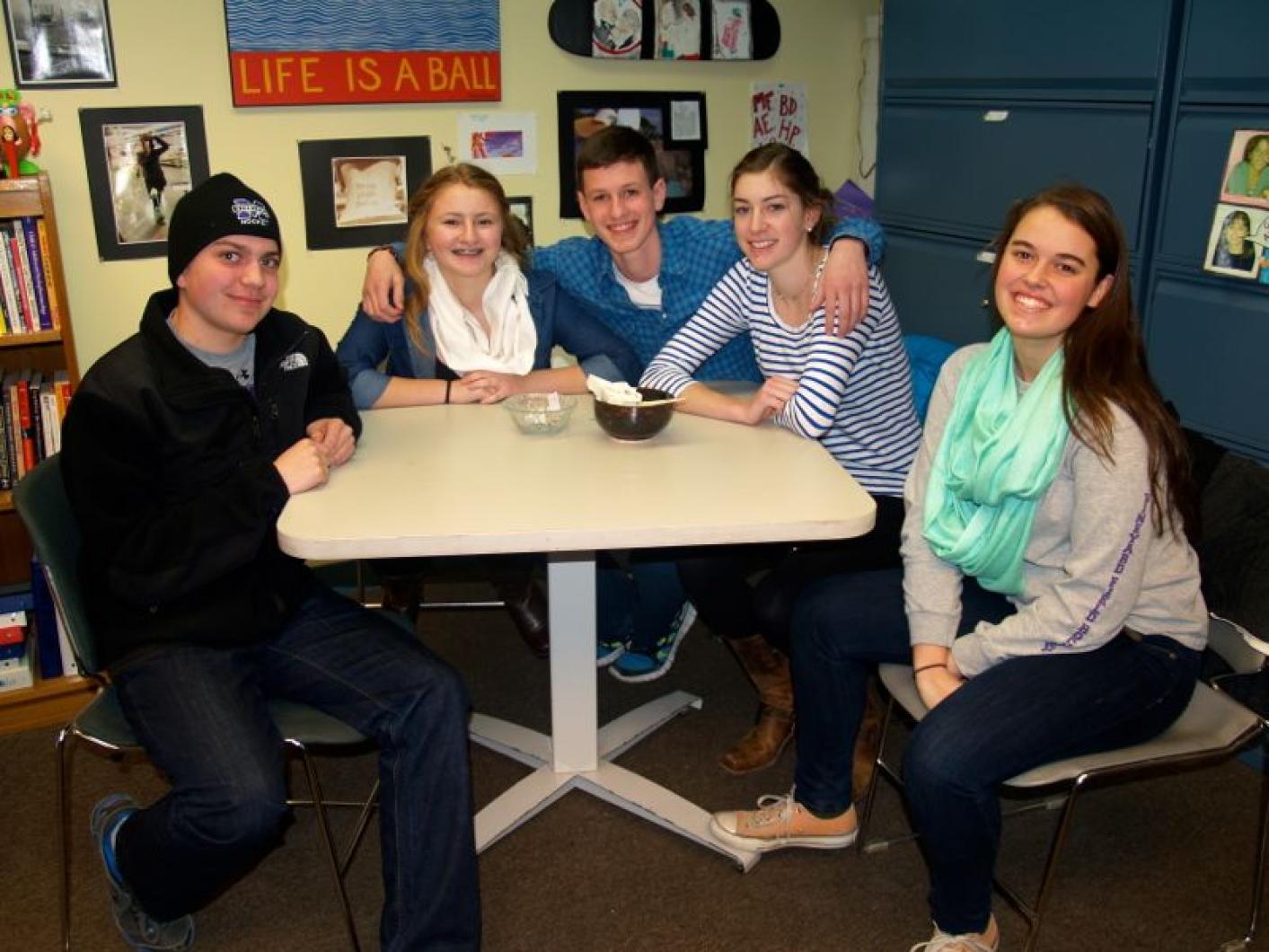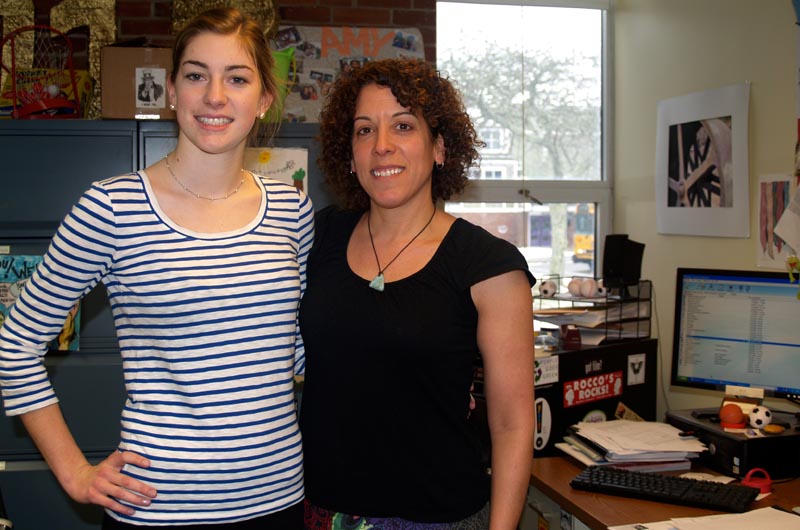When high school freshman Mason Jeffers was given a slip of paper at the beginning of the school year notifying him that he had been nominated by his class to be part of Peer Outreach, he was surprised. Mason, along with 39 other students across all grades levels, was identified by a schoolwide survey as a person his fellow students would feel comfortable going to with a problem. “It made me proud that out of my whole grade I was one of the top 10 people who they trust,” he said.
Fifteen years ago, former high school athletic director Michael McCarthy moved back to the Island to serve as director of guidance. Mr. McCarthy had been working in the guidance department of E.O. Smith high school in Storrs, Conn., where he ran Peer Natural Helpers, a national program that recognizes that students are apt to first seek help from friends before they would consider going to an adult. When he came back to the Island, Mr. McCarthy hoped to start a similar program at the high school here. In 2005 it finally happened, when the budget allowed for a school adjustment counselor to be added to the staff. Amy Lilavois had been working with students at Martha’s Vineyard Community Services and was a good fit for the position since she already had a strong connection to the high school.
“Mike said, there’s this program I did at E.O. Smith and I really want to start it here,” Ms. Lilavois recalled. “So he handed me a binder and said, here you go.” She reworked the program, and now uses only the helping skills piece of the Peer Natural Helper program.
In September students nominate three peers and two adults whom they identify as people they trust and would feel comfortable talking to about a problem. Each school year, 40 students are nominated and trained as peer helpers. At any given time, there are 100 peer helpers in the building. “They’re my eyes and ears in the hallway,” said Ms. Lilavois. “As adults, we think we know what’s going on but we really have no idea.”
The group is as diverse as the problems they encounter. “It’s definitely not a popularity contest,” said junior Tony Breath. “If you look at some of the names that are chosen every year you can tell it’s not the most popular kids in school or the best-looking. It’s really integrated. You get kids from every different friend group.”
Just before Thanksgiving the selected students take part in two days of training, where they learn a variety of helping skills through role-playing, team building and small group discussions. The adult nominees participate in the activities alongside the students. Everyone is on a first-name basis. “You can become close to someone who’s an administrator because you are on their level, you are their equal for the two days,” said junior Mary Ollen.
The first day of the retreat is counseling 101. The second day teaches students to recognize their limits — specifically limits of energy and ability — how to set boundaries, and when to seek help from an adult. Relationship issues, school anxiety and parent problems are manageable issues for student peer counselors. But the program stresses that issues such as abuse and suicide stretch beyond student limits.
“You think you can take on everything and you want to help them but sometimes you just can’t do it,” Mary said. “So to be beneficial to that person you have to step outside of yourself.”
The program is funded by the Alexandra Gagnon Foundation, created by Jacques and Marfi Gagnon in honor of their daughter who died after battling drug addiction. This year, the retreat was held in the teen center at the YMCA, named for Miss Gagnon. “Jacques Gagnon has been unbelievable from day one and so, so supportive,” said Ms. Lilavois. “So this year for us to be able to do it at the teen center, which is in honor of their daughter, was so touching.”
Aside from peers helping peers, the students also participate in anti-bullying programs, including an assembly for incoming freshman followed by advisory sessions in homerooms. Tony, who played the role of a victim of bullying in a skit taken from a real life situation, said he has seen a change in the way bullying is perceived. “We don’t see it as cool anymore,” he said. Freshman and peer outreach member Kyra Whalen said the presentation gave her the tools she needs if she does witness bullying. “Now that I understand the process, I am more likely to go to Amy if I see it happening around school,” she said.
“One of the biggest powers of Peer Outreach is strength in numbers,” said Dana Jacobs, a senior and peer outreach retreat facilitator. “I have the confidence to say, that’s not right, even if I’m alone. Even though I’m not standing with my other 39 peer outreachers, they’re standing behind me in that I know they would do the same thing.”
In addition to helping peers, outreach students give high school tours to eighth-grade students, perform community service, speak at school committee meetings, orient new students to the high school and participate in suicide prevention training. And when they leave the regional high school, they often take peer outreach with them.
Ana Carvahlo graduated in 2009 and is now a senior at Tufts University. “My time in the program awakened me to think about who I was and who I wanted to be, because of the very nature of the program,” she said. “What I mean is that, because you are picked from a survey of your peers, you start thinking about why they put your name down. Essentially the question was, why are you important to these people and how are you affecting their lives?” Through her participation in peer outreach, Ms. Carvalho became involved with the Community Services program Connect to End Violence, where she has interned the past three summers. “I learned about the amazing work that the staff does, and as someone who was looking for my purpose in life, I decided that I wanted to do what they did,” she said. She is majoring in child psychology.
“The skills you learn you can take with you for the rest of your life — it’s always going to be there. What happens in Peer Outreach stays in Peer Outreach,” joked Tony. “Except the helping skills, they stay with you.”






Comments
Comment policy »